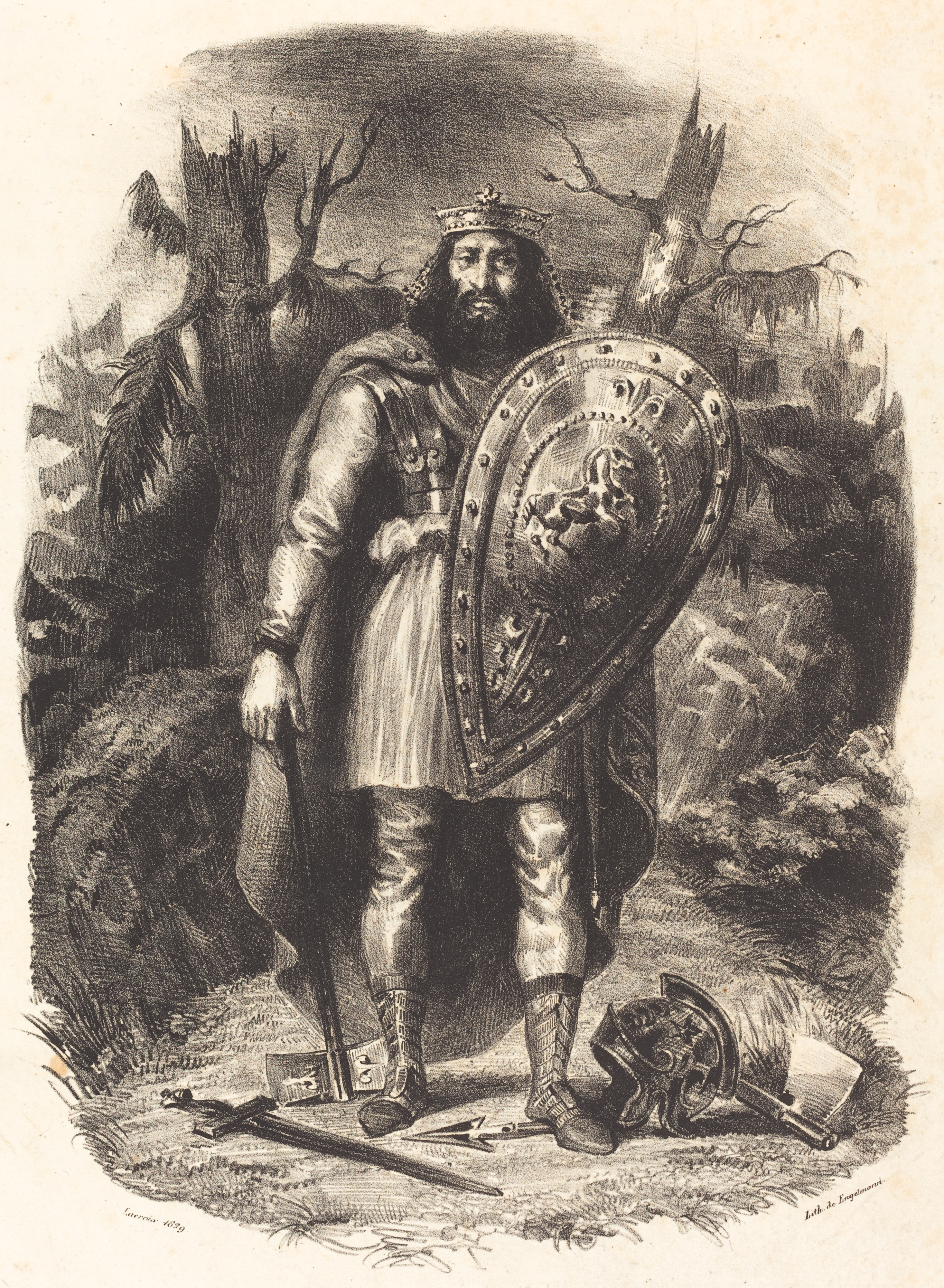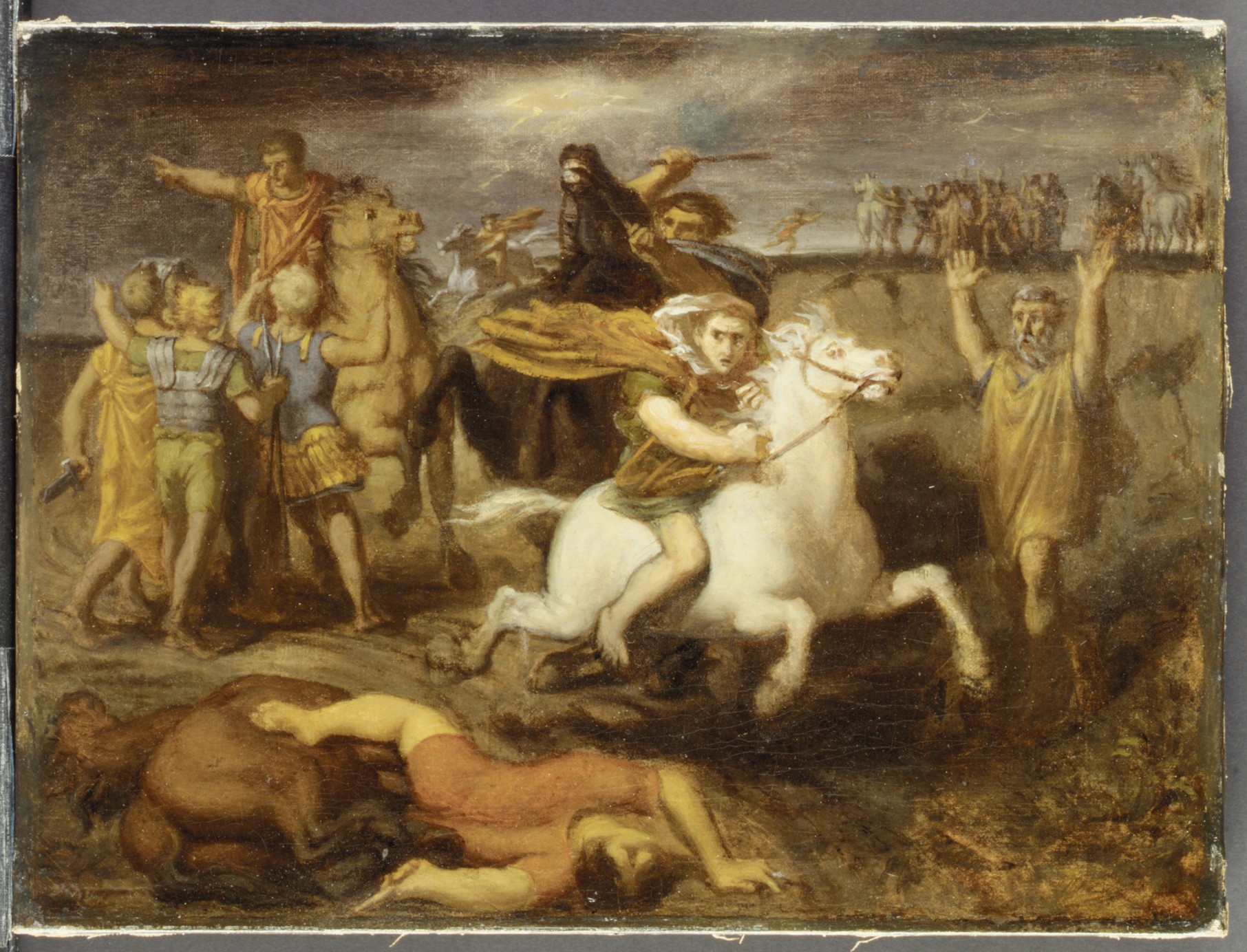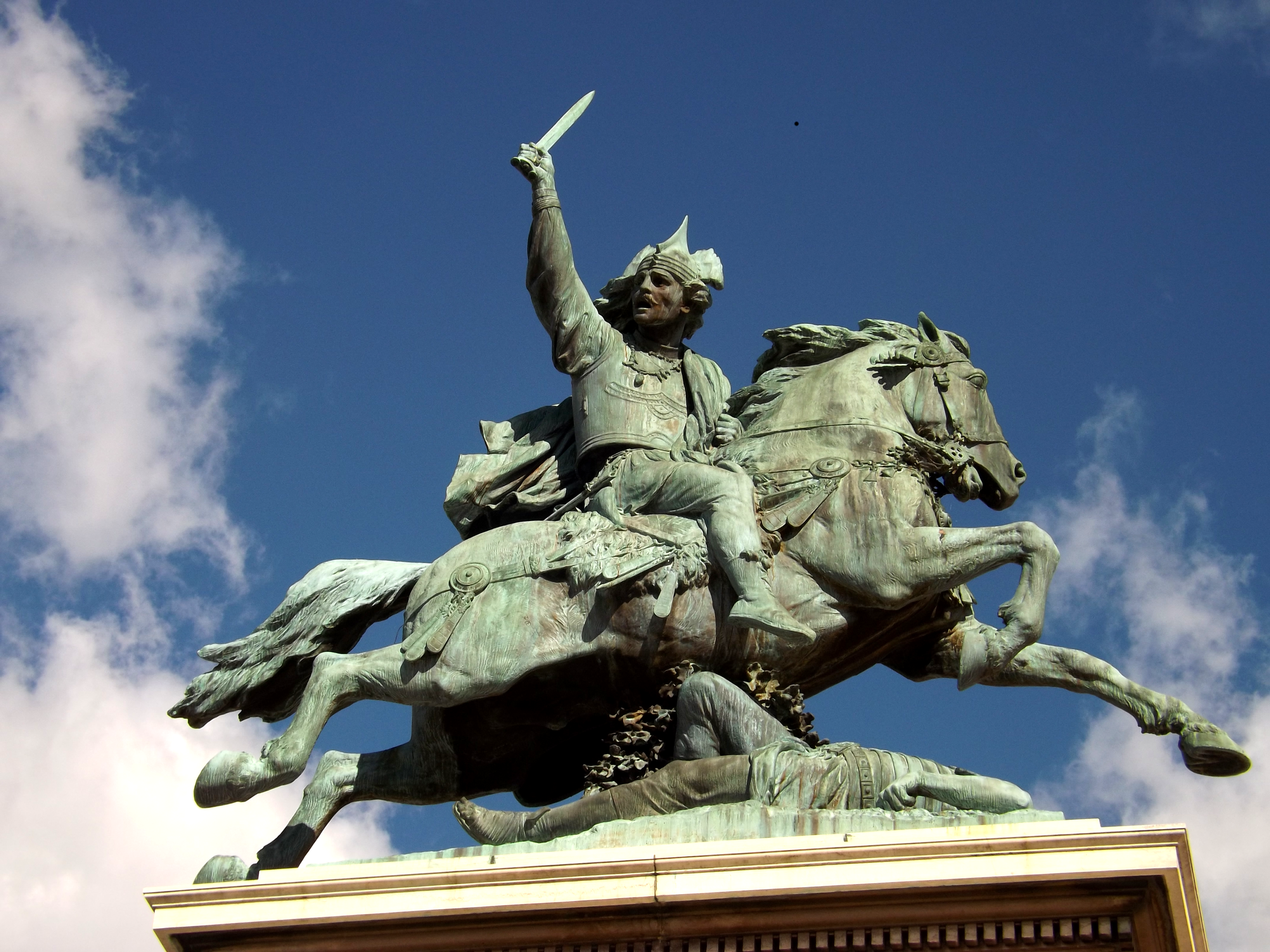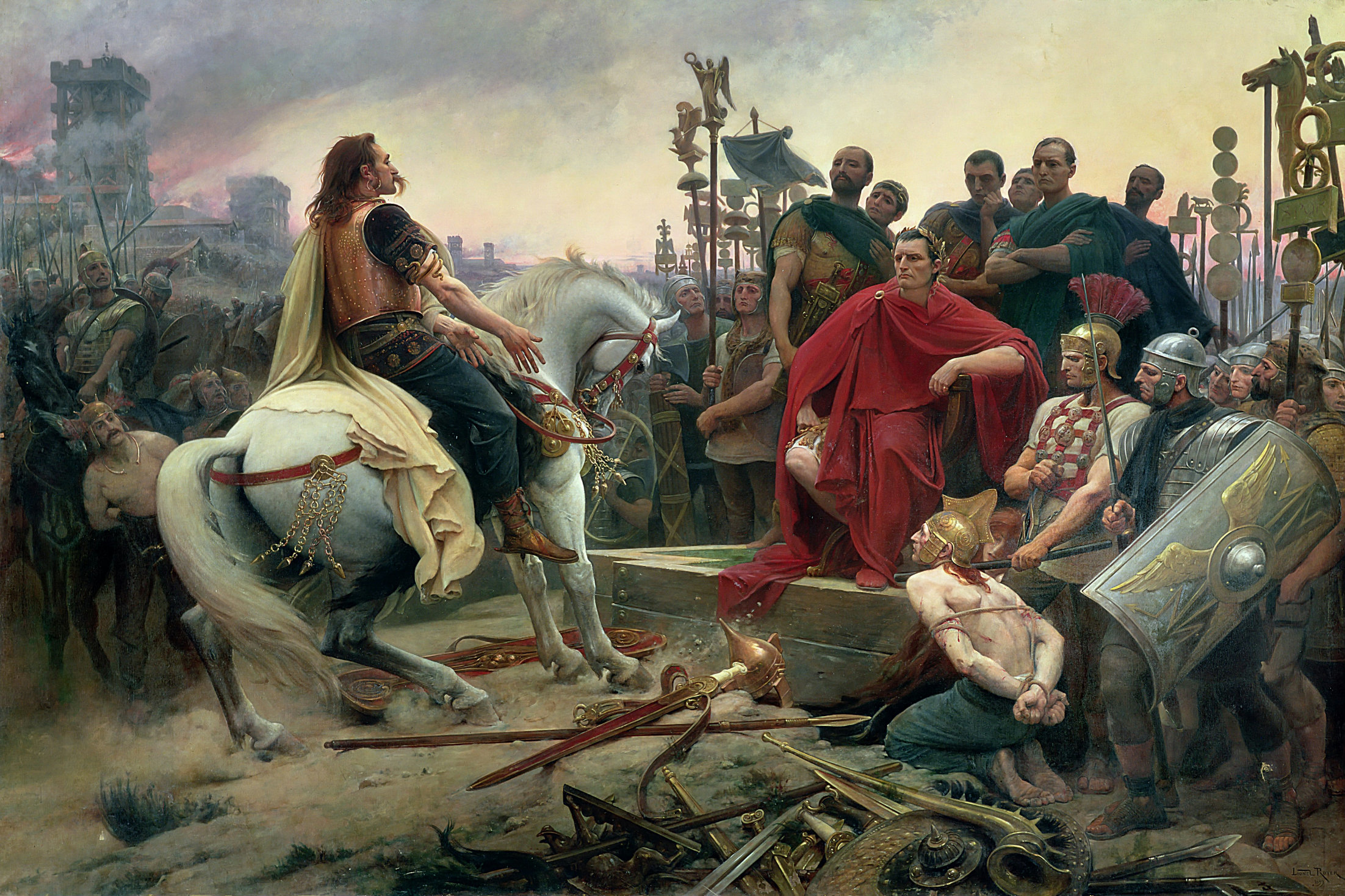Last Updated on September 21, 2023 by Vladimir Vulic
Vercingetorix, a name etched in the annals of ancient history, stands as a symbol of unwavering Gallic resistance against the formidable might of Rome. The story behind this French folk hero is unjustly unknown, which is why we will delve into the life and legacy of Vercingetorix, the heroic Gallic chieftain who led his people in a valiant struggle against the Roman Empire, his rise to prominence, his strategies, and his resilience to fight for his people.

The Man and His Times
Born around 82 BC into the Arverni tribe, Vercingetorix emerged as a charismatic and capable leader at a pivotal moment in history. The Gallic tribes faced the relentless expansion of the Roman Republic, and Vercingetorix was destined to play a central role in the unfolding drama.
Before Julius Caesar‘s attack on Gaul (Gallia), the region was inhabited by various Celtic tribes. It was a largely independent territory with its own internal divisions and conflicts. In the meantime, Rome was already a powerful and expanding republic in the Mediterranean. Rome’s republic had been steadily expanding its territory through conquests in Italy and overseas provinces. By the 1st century BC, it had acquired vast territories in the Mediterranean, including parts of modern-day Italy, Spain, Greece, and Asia Minor.
The next in line for conquering was today’s France, but there was one obstacle – Vercingetorix. The year 58 BC marks the beginning of the epic clash between the mighty Roman Republic and politically unorganized but defiant and heroic Gauls.

The Battle of Gergovia and Defiance
Vercingetorix’s indomitable spirit was showcased at the Battle of Gergovia in 52 BC, where he confronted Julius Caesar’s legions. Gergovia was a hilltop fortress located in central Gaul, near modern-day Clermont-Ferrand, France. It was a strategically important location and served as a stronghold for our man of the hour.
Although Vercingetorix used guerrilla warfare and scorched-earth tactics to weaken Caesar’s forces, Romans laid siege to Gergovia, attempting to capture the fortress. However, the terrain and the Gallic resistance made the siege challenging. Caesar’s forces faced difficulties in breaching the fortifications. After the failed assault, Caesar decided to abandon the siege and ordered a retreat. As Cesar claimed in his “Commentarii de Bello Gallico,” the battle ended inconclusively, but it was a clear Roman defeat, and it highlighted Vercingetorix’s determination to resist Roman conquest.

“The Strategy”
His overall strategy can be explained in four steps:
- Gallic Unification: He successfully rallied various Gallic tribes and chieftains, convincing them to put aside their internal rivalries and join forces to resist the Romans.
- Scorched-Earth Policy: Vercingetorix adopted a scorched-earth policy, which involved burning towns and crops to deny these resources to the advancing Roman legions, therefore cutting off Caesar’s supply lines. Gaullic people even burned down their own villages to deny resources to arriving Roman forces. This strategy weakened Caesar’s forces but came at a considerable cost to the Gallic population.
- Hit-and-Run Guerrilla Warfare: He knew his army couldn’t match Romans, so he ordered attacks on Roman patrols. That way he made the Roman occupation of Gaul dangerous and expensive.
- Siege Defense: When forced into defensive situations, Vercingetorix and his troops would often retreat to fortified hilltop towns and strongholds, like in Gergovia.
Overall, this strategy has been proven to be the best against the Roman army, but today, we learn about Ceasar as the military strategy GOAT of ancient times, which means that the hero of our story has just prolonged the inevitable and that inevitably came in the same year when their armies faced each other at Alesia.
The Siege of Alesia
The turning point of Ceaser versus Vercingetorix and the Gallic wars, in general, was the battle of Alecia. Caesar’s army established a double line of fortifications around Alesia. The outer fortifications were meant to keep reinforcements from reaching the besieged, while the inner fortifications encircled the town itself. Vercingetorix’s forces were trapped within the town, with their supplies dwindling. In the irony of fate, Vercingetorix got the taste of his own medicine.
Aware of Vercingetorix’s dire situation, Gallic tribes gathered to launch a massive relief force. The relief army, estimated to number in the tens of thousands, aimed to break through Caesar’s siege lines and rescue Vercingetorix. This is where we can fully perceive Caesar’s tactical genius as he managed to turn an offensive military operation into a defensive one. Surrounded by both the Gallic relief army and the forces in the fortress, Caesar’s army, defended by walls, managed to withstand all the attacks.
After several days of intense fighting, the Gallic relief force was demoralized and eventually retreated. Realizing that no help was coming, Vercingetorix made the difficult decision to surrender to Caesar because he wanted to spare the life of his people by sacrificing himself. The battle of Alesia was a clear sign that the war would end soon, which is exactly what happened two years later in 50 BC.

Vercingetorix captivity
Since the moment of his surrender, Vercingetorix was taken as a captive and held prisoner for six years. He was kept in a subterranean cell, likely in the Tullianum, a notorious Roman prison, just to be paraded through the streets of Rome as a symbol of Caesar’s victory over the Gallic tribes in 46 BC. After the triumph, Vercingetorix was executed by strangulation, as was the customary fate of defeated enemy leaders in Rome. This marked the end of his life and his role in the Gallic Wars, but not in history.
“The Icon”
Overall, Vercingetorix continues to be a figure of historical and cultural significance, representing the complex interactions between different civilizations in ancient times and the enduring legacy of resistance against overwhelming odds. Vercingetorix’s story has transcended the annals of history, finding a place in modern culture. His enduring legacy has been celebrated in literature, film, and popular culture, solidifying his status as an iconic figure of resistance.
Today, he still remains a French folk hero honored even by his nemesis, Julius Caesar, who helped him gain his glory and a rightful spot in history by giving him one of the main roles in his war diaries. Almost mythical, Vercingetorix’s role in history continues to captivate the imagination of historians all around the world.
Hello, my name is Vladimir, and I am a part of the Roman-empire writing team.
I am a historian, and history is an integral part of my life.
To be honest, while I was in school, I didn’t like history so how did I end up studying it? Well, for that, I have to thank history-based strategy PC games. Thank you so much, Europa Universalis IV, and thank you, Medieval Total War.
Since games made me fall in love with history, I completed bachelor studies at Filozofski Fakultet Niš, a part of the University of Niš. My bachelor’s thesis was about Julis Caesar. Soon, I completed my master’s studies at the same university.
For years now, I have been working as a teacher in a local elementary school, but my passion for writing isn’t fulfilled, so I decided to pursue that ambition online. There were a few gigs, but most of them were not history-related.
Then I stumbled upon roman-empire.com, and now I am a part of something bigger. No, I am not a part of the ancient Roman Empire but of a creative writing team where I have the freedom to write about whatever I want. Yes, even about Star Wars. Stay tuned for that.
Anyway, I am better at writing about Rome than writing about me. But if you would like to contact me for any reason, you can do it at con[email protected]. Except for negative reviews, of course. 😀
Kind regards,
Vladimir
